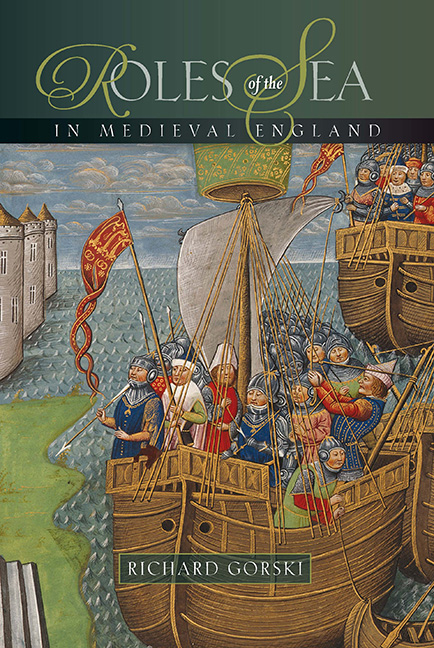Book contents
- Frontmatter
- Contents
- List of Contributors
- Map
- 1 Roles of the Sea: Views from the Shore
- 2 Changes in Ship Design and Construction: England in the European Mould
- 3 The Value of the Cinque Ports to the Crown 1200–1500
- 4 The Contribution of the Cinque Ports to the Wars of Edward II and Edward III: New Methodologies and Estimates
- 5 Keeping the Seas: England's Admirals, 1369–1389
- 6 The Cost-Benefit Analysis of a Fourteenth-Century Naval Campaign: Margate/Cadzand, 1387
- 7 Piracy and Anglo-Hanseatic Relations, 1385–1420
- 8 ‘Herring of Sligo and Salmon of Bann‘: Bristol's Maritime Trade with Ireland in the Fifteenth Century
- 9 How Much did the Sea Matter in Medieval England 167 (c.1200–c.1500)?
- Index
8 - ‘Herring of Sligo and Salmon of Bann‘: Bristol's Maritime Trade with Ireland in the Fifteenth Century
Published online by Cambridge University Press: 05 September 2016
- Frontmatter
- Contents
- List of Contributors
- Map
- 1 Roles of the Sea: Views from the Shore
- 2 Changes in Ship Design and Construction: England in the European Mould
- 3 The Value of the Cinque Ports to the Crown 1200–1500
- 4 The Contribution of the Cinque Ports to the Wars of Edward II and Edward III: New Methodologies and Estimates
- 5 Keeping the Seas: England's Admirals, 1369–1389
- 6 The Cost-Benefit Analysis of a Fourteenth-Century Naval Campaign: Margate/Cadzand, 1387
- 7 Piracy and Anglo-Hanseatic Relations, 1385–1420
- 8 ‘Herring of Sligo and Salmon of Bann‘: Bristol's Maritime Trade with Ireland in the Fifteenth Century
- 9 How Much did the Sea Matter in Medieval England 167 (c.1200–c.1500)?
- Index
Summary
For much of the Middle Ages in England, Bristol was second only to London in terms of population and trade. Bristol had achieved county status with two charters granted by Edward III in 1373. Until then, the only other place in England to have been made a county was London. Bristol as a borough already had a mayor and a common council but its new county status gave it its own sheriff and county courts. In addition, it also had the right to elect two Members of Parliament. Despite its importance in the medieval period it could be argued that it has been relatively neglected by historians. Modern historians examining medieval Bristol have focused on its religious life, its topography, and its political, social and ethnic life, or else have concentrated on its trade with the Mediterranean or the north Atlantic. However, in terms of trade and the social links binding Bristol to Ireland it has been left to historians such as Wendy Childs, E.M. Carus- Wilson and James Sherbourne to provide an examination of the subject. This chapter expands on their work by examining Bristol's trade with Ireland from 1000 to around 1500 but concentrating on the fifteenth century. There are three aspects that will be explored and developed: the uniqueness of this trade compared with Bristol's trade with other parts of Europe, the nature of the mercantile community which traded with Ireland, and what can be learnt from the home ports of these ships. By addressing these three questions it is hoped to develop a clearer picture of the trade, the resulting mercantile community and the strong cultural links that developed between Bristol and Ireland.
A source of trade for Bristol, Ireland in the late Middle Ages was divided between those areas loyal to the English crown and those controlled by the Gaelic Irish. The area around Dublin and Drogheda was controlled by the English Irish and was known as the English Pale. The earldoms of Desmond and Ormond occupied vast swathes of the southern Irish counties and included the ports of Cork, Waterford and Wexford, with which Bristol traded.
- Type
- Chapter
- Information
- Roles of the Sea in Medieval England , pp. 147 - 166Publisher: Boydell & BrewerPrint publication year: 2012



